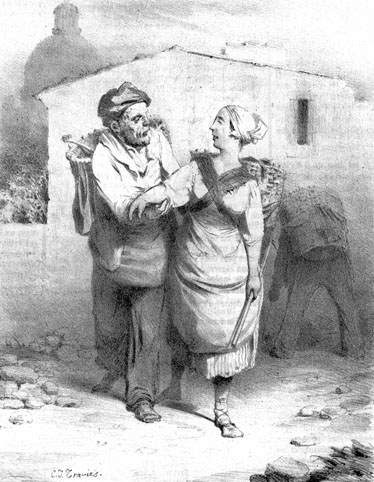A guild
This pair of piqueurs have to save up in order to buy their place or beat and so improve their lot. For the picqueur (or coureur) was at the bottom of the hierarchy of ragpickers: he would walk about day or night, armed with his hook, a lantern and a sack. The lot of the placier was a more enviable one. He had purchased his beat, and in exchange for carrying out small odd jobs, he collected his booty directly from concierges or householders. Smart districts were highly prized.
"...first there are those who were born into the ragpicking trade, the children of ragpickers who have never known anything else. Then there are many who, like me, in the winter of 1860-61, finding myself without work, became a ragpicker in the evenings to begin with, for I feared running into people who knew me. To avoid being recognized, I wore a wide-brimmed hat which I took care to pull down over my eyes. At that time I would earn six or seven francs every evening working until midnight or one in the morning. (...) When the fine weather returned, and work resumed in my trade as carpenter, I did not look for work, but continued picking rags and I plucked up the courage to work in the mornings. Earning only 3.75 francs in carpentry, a day's pay in 1860, I preferred to pick rags because I earned more and I had more freedom."
Extract from Notes d'un chiffonnier by Desmarquest, in Le Travail en France. Monographies professionnelles by J. Barberet
Master ragpickers even became rich themselves: they bought the items collected by the piqueurs and the placiers, employed people to sort them, and sold them by the truckload to the textile industry; bones and metals too. It is estimated that there were 15,000 ragpickers in Paris and at least 100,000 in France in the middle of the 19th century.











